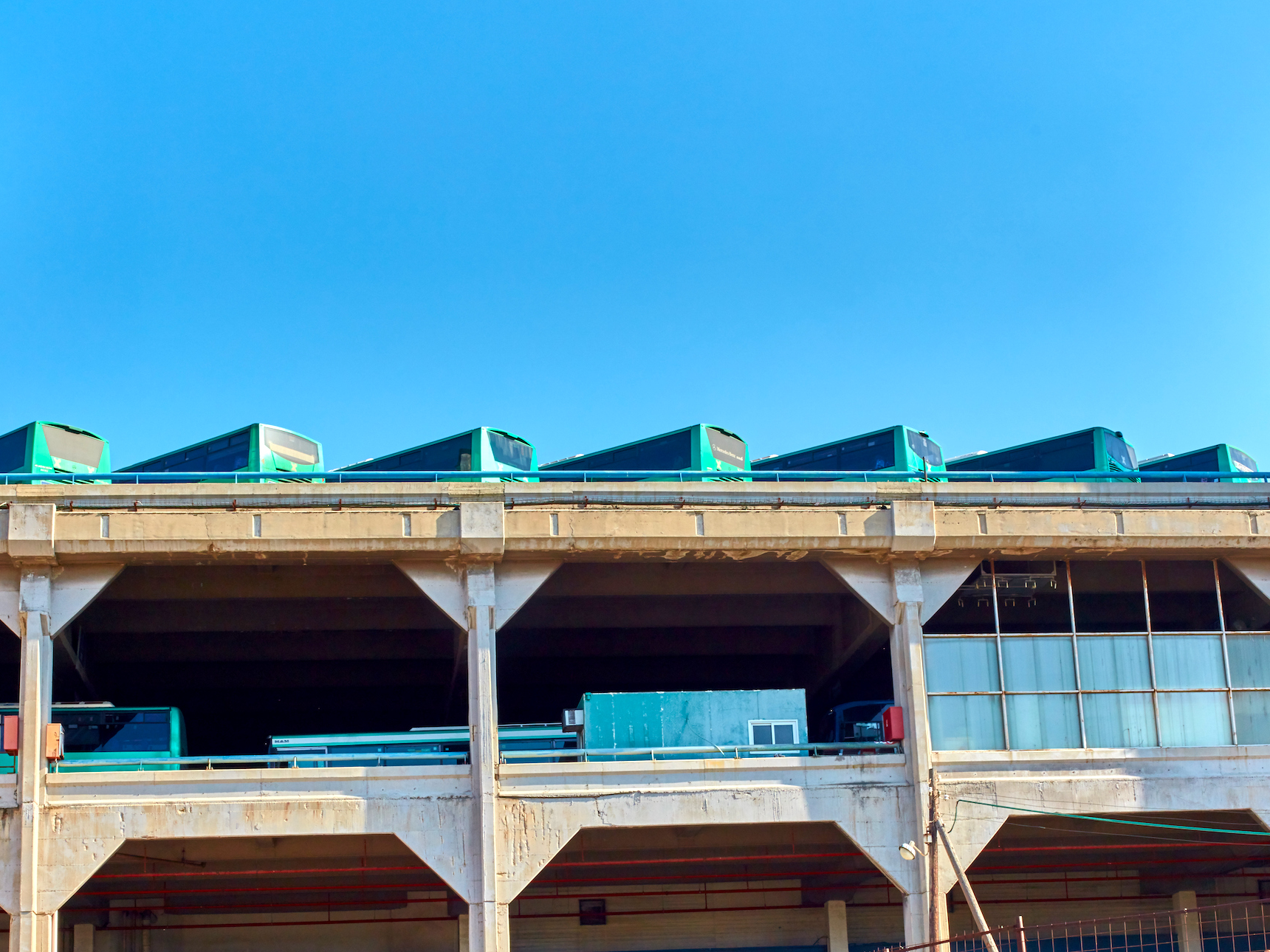- Israel’s Tel Aviv New Central Bus Station is one of the largest bus stations in the world, second only to Millennium Park Bus Depot in Delhi, India, according to Hindustan Times.
- But, even though it’s only 15 years old, only a fraction of the station is still used for travel, and a motley crew of artists, vendors, and worshipers are filling the void left behind.
- The station’s architecture resembles a maze, and the building is filled with empty shops, confusing passageways, and abandoned corridors.
- An abandoned terminal in the station is home to a colony of Egyptian fruit bats. The Jerusalem Post reported that the bats settled there because of how closely it resembles a cave.
- Although this is considered a “monstrosity” of a station, according to The Guardian, the transportation hub’s unique flaws have stimulated cultural growth and development.
- Officials have wanted to tear down the station, but the Times of Israel reported that it can’t be done safely. They wrote that the demolition would coat Tel Aviv in dust that could choke its residents “for weeks.”
- Visit Business Insider’s homepage for more stories.
In a neighborhood on the west coast of Israel …

… just about two miles from Jerusalem Beach …

… lies the Tel Aviv New Central Bus Station. It opened in 1993 on the outskirts of Nave Sha’anan, and it’s the second-largest bus station in the world.
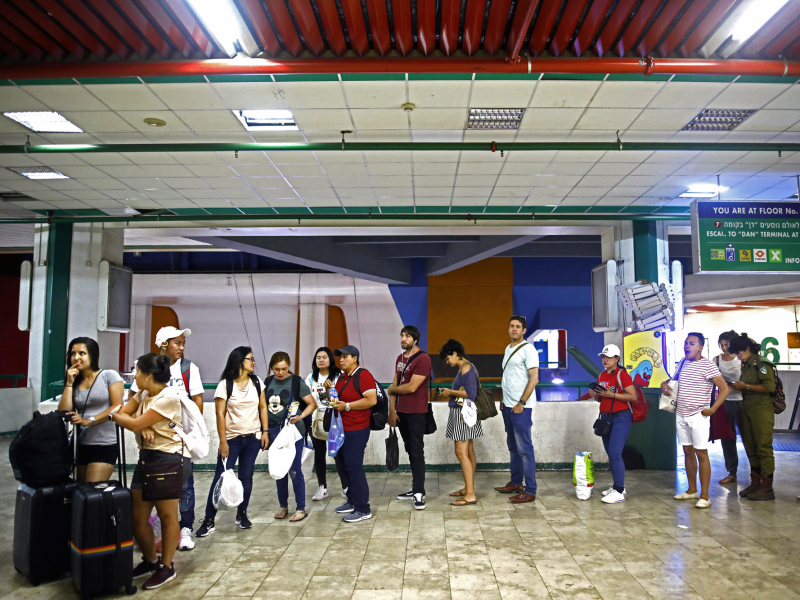
Source: Atlas Obscura, The Guardian
Since then, the station has fallen into disrepair, and many parts of it are abandoned. But this has allowed the station to take on a new life as a cultural hub.

People with various ethnic and religious backgrounds live and work around the station, and they attend community events within the station. The sense of community in the station is “like no other in Israel,” according to the Guardian.

Source: The Guardian
“It is a place where many peoples and cultures intersect — it’s certainly one of the most diverse spots in the country,” Naomi Zeveloff, a reporter based in Tel Aviv, told Business Insider. “The building is run down, no question, but peel back the layers and there’s so much to discover.”
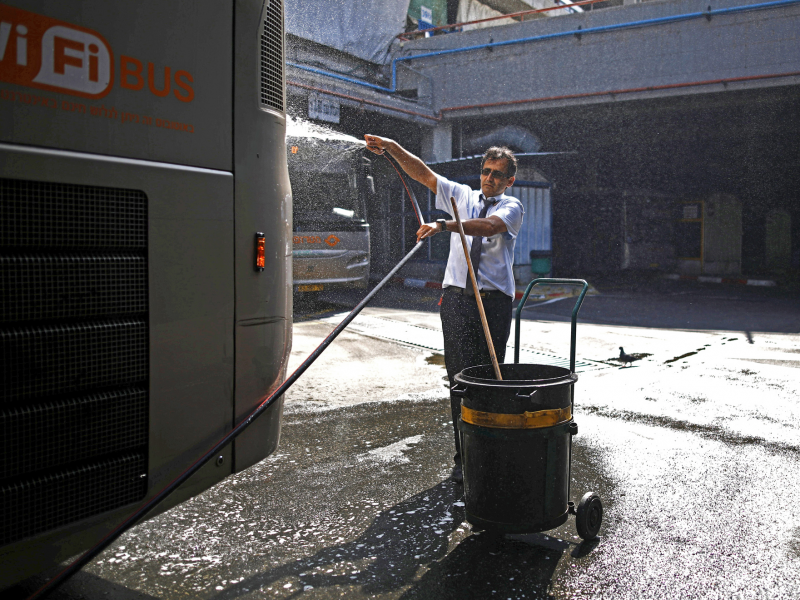
One of the cultural centers is Yung Yidish — a non-profit organization that aims to preserve Yiddish culture. The center is open Tuesday through Wednesday each week, according to Time Out.

The bus station also serves as a host for different events, like the annual beauty contest for migrant workers from the Philippines residing in Israel.
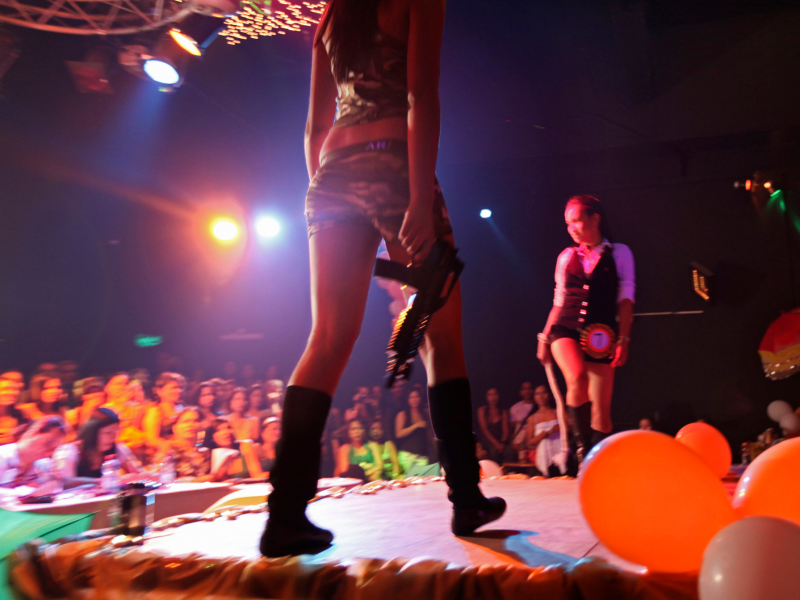
Source: AP Images
Stav Pinto is a circus artist who practices her acrobatics in the station. Pinto uses her circus talents to teach life skills to children with disabilities and meets with an informal circus group on Monday evenings.
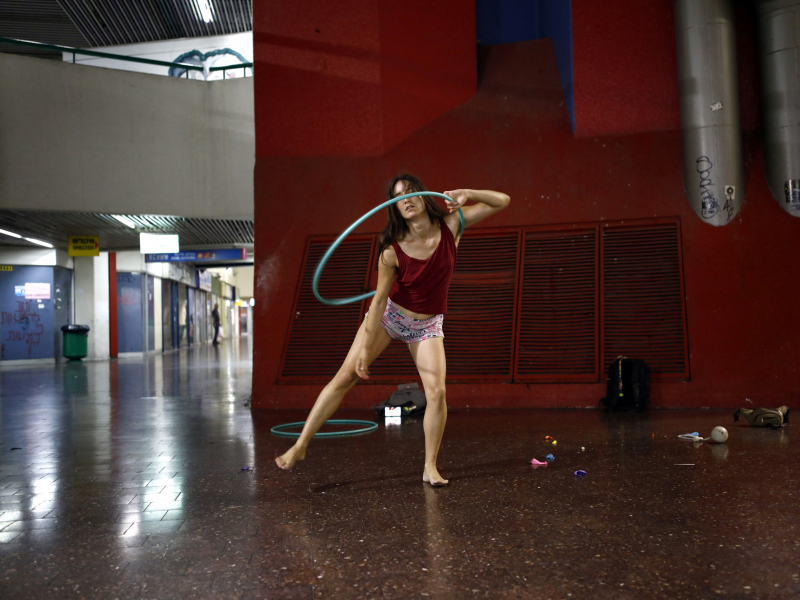
Source: Reuters
"There's a magical air to the Central Bus Station that reminds me of a dark urban forest," Pinto told Reuters.

Source: Reuters
Another artist, Tamar Lehman, uses space at the station to practice dancing and playing the accordion. "I felt this building is just like the people I work with — they may appear totally confused within themselves, not understood, bizarre, but the more you learn about the people and their inner structure you slowly become more familiar with their inner world, with all its craziness, and you see the beauty," Lehman told Reuters.
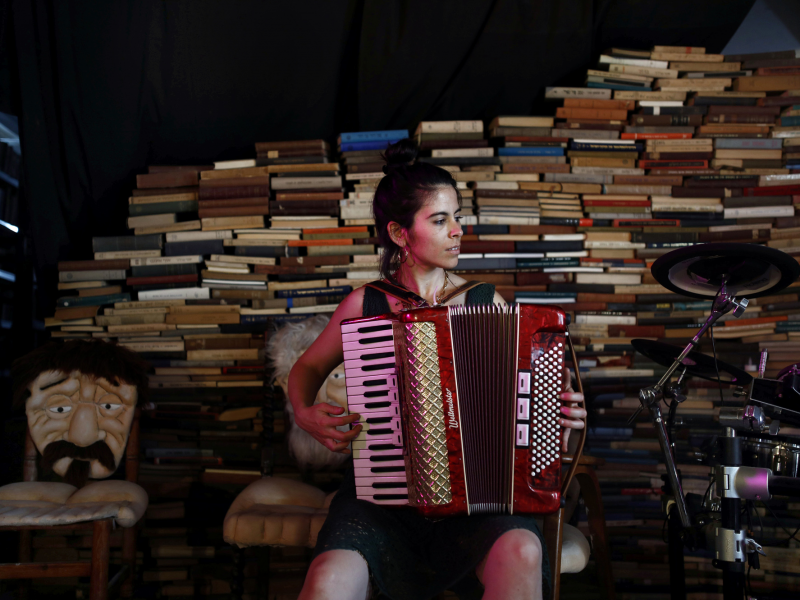
Source: Reuters
But Tel Aviv's bus station isn't just for practice, it's also the stage for "Seven" — a performance by actors from the Mystorin Theatre Ensemble — which uses all seven floors of the station as a stage.

Source: Reuters
The show was created specifically for the station, according to Broadway World.
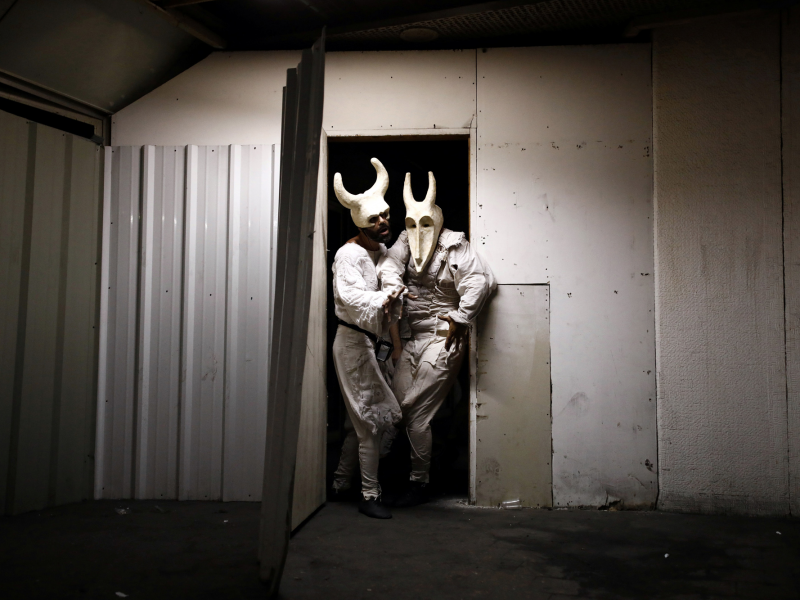
Source: Broadway World
The show uses the daily grind of the station as a part of the performance's setting.

Source: Broadway World
Actor and manager of the play, Dana Forer, called the station a "playground for imagination."

Source: Reuters
The station is not only used by performing artists, though. Visual artists come to the station for inspiration and a space to work, too.
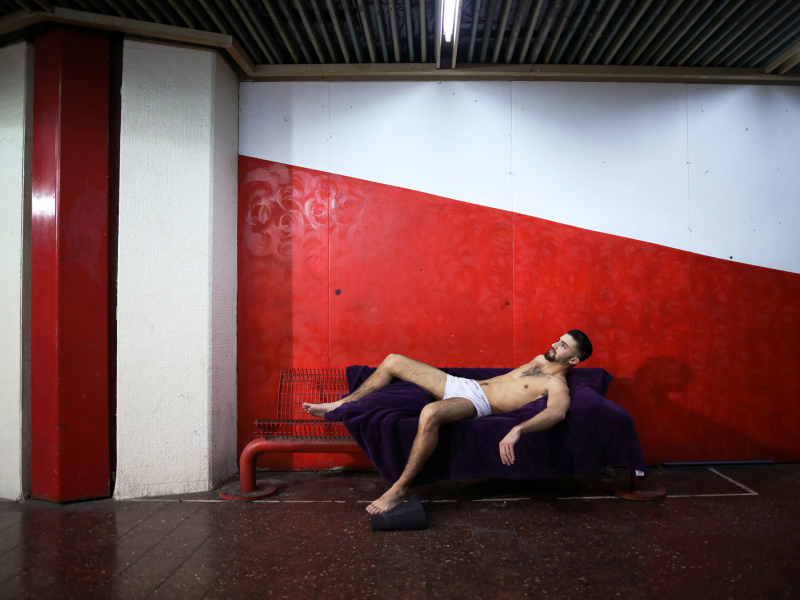
Source: Reuters
The station fosters several communities outside of the arts. There is a Filipino church in the building where worshipers like Merry Christ Palacios, seen here, come to pray. Palacios says she also gets her shopping done inside the building.
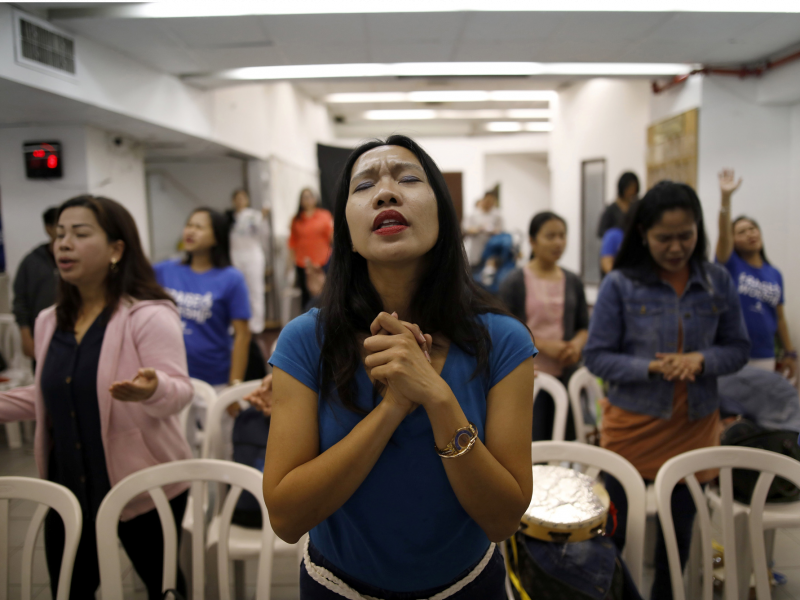
Source: Reuters
"It's special because I can find everything we need to buy," she said of the station, which is home to a Filipino food market called Makati Cabalen. The market is open seven days a week, according to Time Out.

In fact, the entire fourth floor of the station turns into a Filipino food market on Saturdays when public transport is shut down in observation of the Jewish Sabbath.
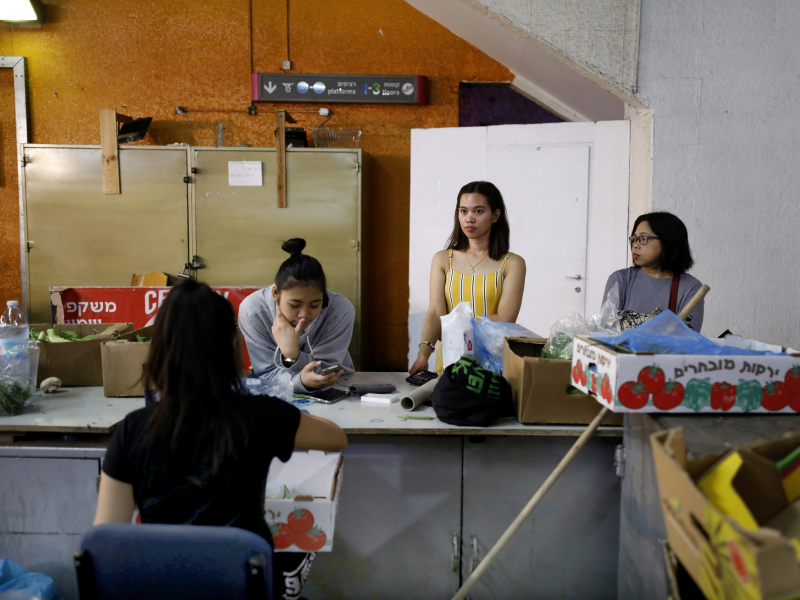
Source: The Guardian
Even outside of the church, people find peaceful places to worship in this spacious station, like in front of this graffiti.
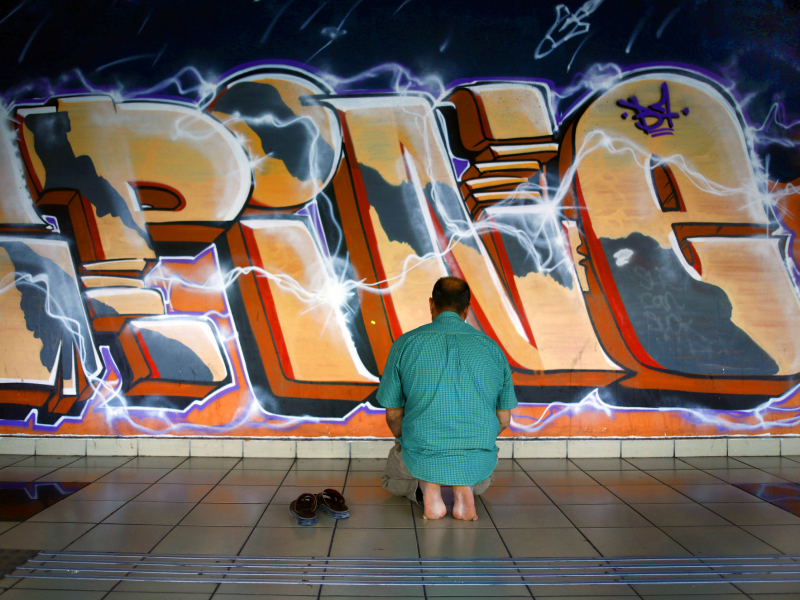
Source: Reuters
But that's not the only place you'll find visual art in the station. This is a room that functions as a gallery for street art. The gallery holds several exhibitions each year, according to Reuters.

Source: Reuters
The station offers guided tours called Talking Art. "We discovered a world that we didn't know existed," a Trip Advisor reviewer said of the tour.
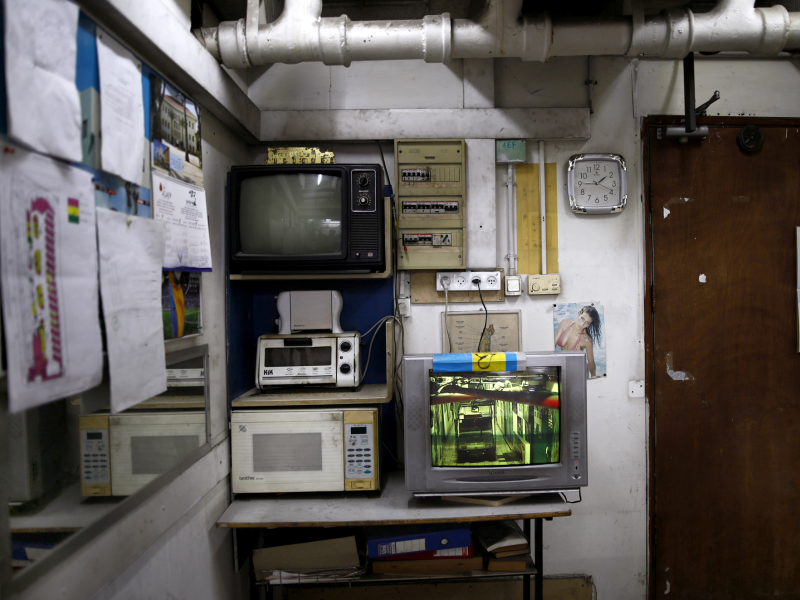
Source: Trip Advisor
While it remains filled with art, the station functions a little differently during times of war. Aside from being a transit hub for soldiers, the station is a gathering point, bomb shelter, and command center when it needs to be, like for Operation Pillar of Defense in 2012.

Source: The Guardian, Haaretz
"In times of conflict it kind of transforms instantly into its military function ... But [the sense of military] is always in the background, like it is with everything else," artist and activist Yonathan Mishal told The Guardian.

Source: The Guardian
The sign to the right of the urinal below directs patrons to the bomb shelter.

Source: Reuters
While many of the station's storefronts are abandoned, like the one seen here ...
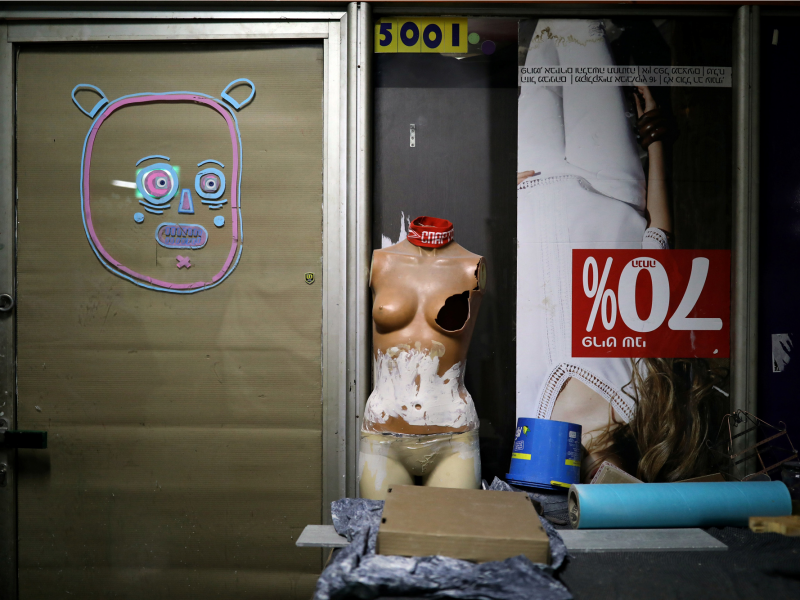
Source: Reuters
... some are open for business like this tattoo parlor ...
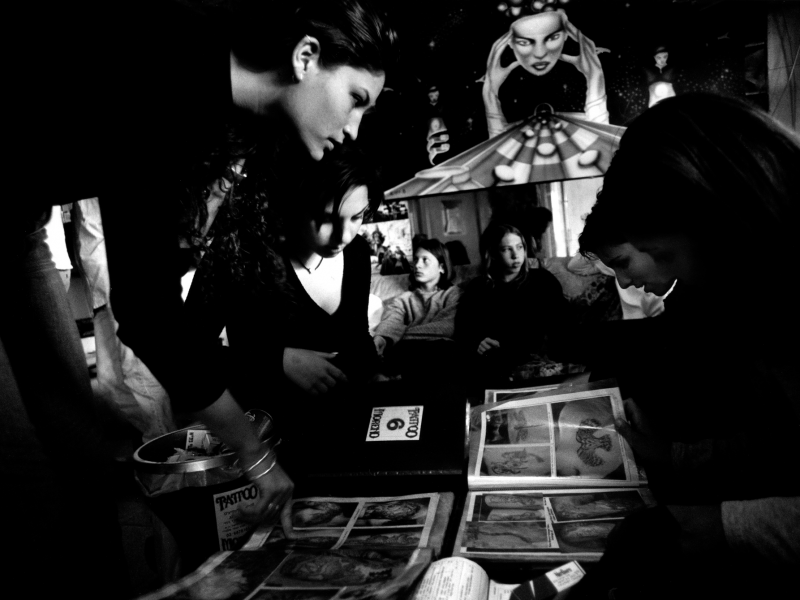
Source: Getty Images
... and this basement-level wholesale shop.
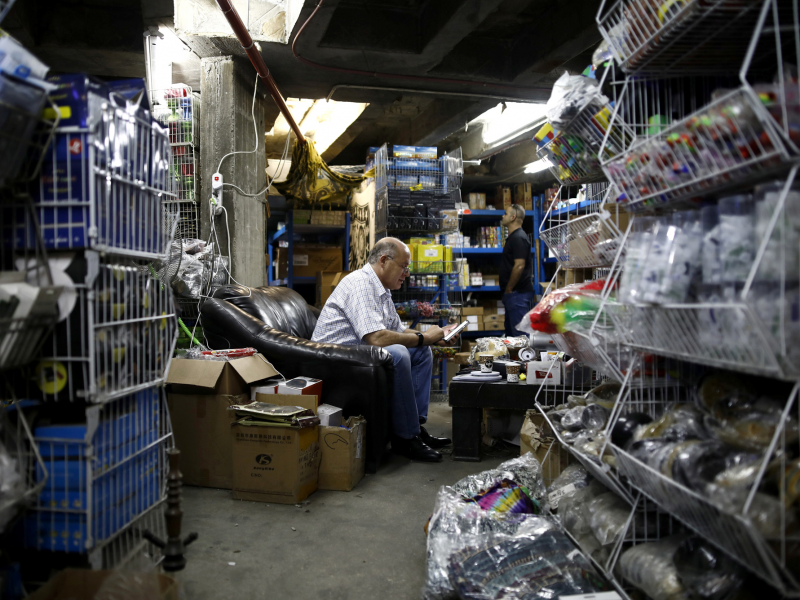
Source: Reuters
But most of the operating vendors stand between the entrances and transit gates.
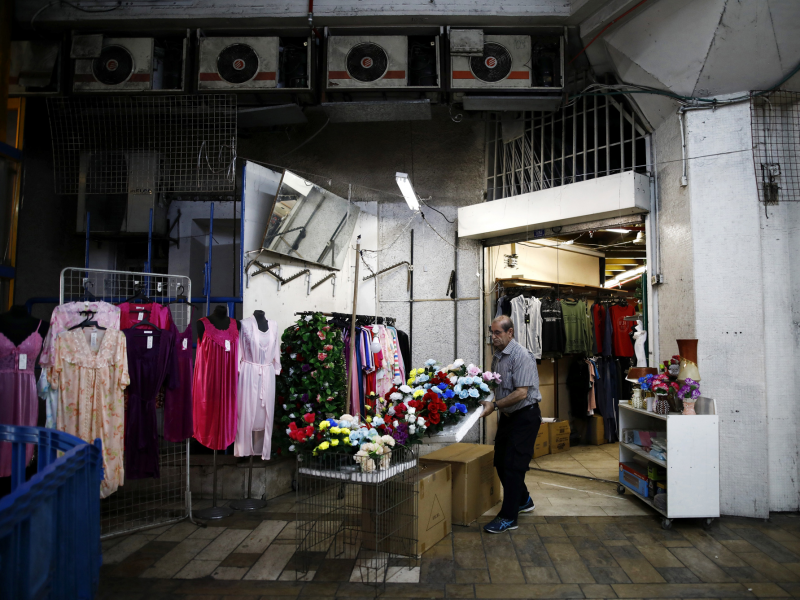
Source: Atlas Obscura
According to the Jerusalem Post, a bat colony took over an abandoned terminal at the station. The terminal was closed off during construction in the '80s before the station was even opened, and the bats were drawn to it because it resembles a cave — the fruit bat's natural habitat.
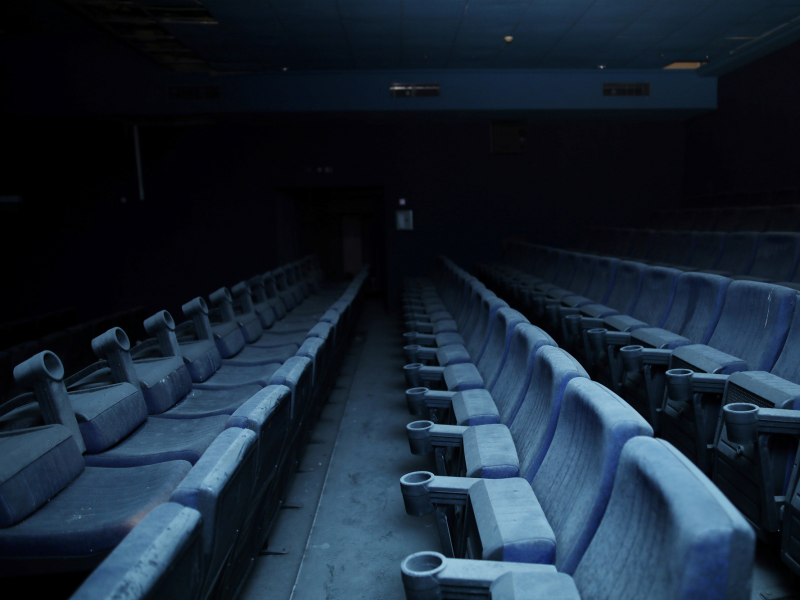
Source: The Guardian, The Jerusalem Post
The bats were drawn to Tel Aviv because of the city's abundance of fruit trees — they stayed because food is easier to find in a city, which saved them time and energy. The bats are harmless, according to The Jerusalem Post.

Source: The Jerusalem Post
Refugees and people without homes have also found a safe space in and around the station's deserted parts.
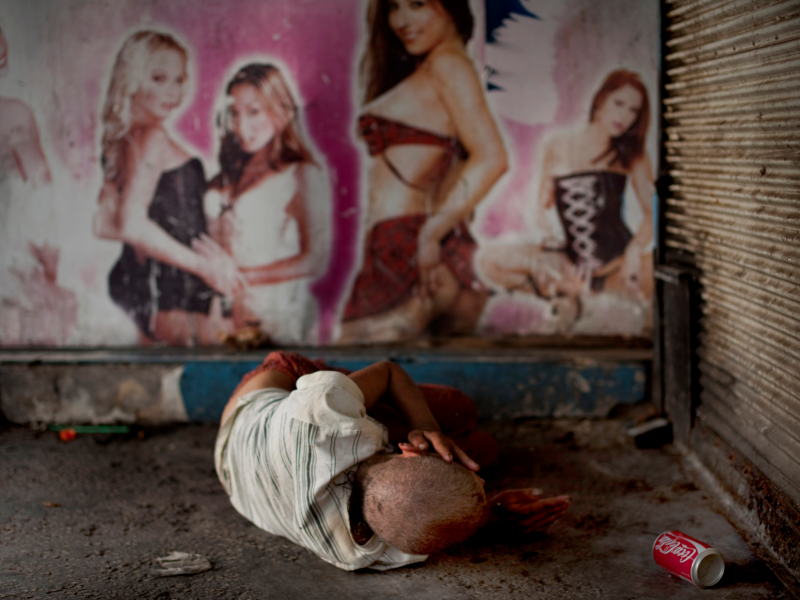
Source: The Guardian
The station's empty areas and failed businesses have a lot to do with the way the station came to be.

Source: The Guardian
Construction on the station began in 1967 but kept getting delayed until its opening nearly 26 years later. Designed by Ram Karmi — who also designed Israel's supreme court building and a terminal at Ben Gurion Airport — the station was intentionally built to be confusing. Karmi reportedly hoped lost commuters would spend more money at the station’s stores.
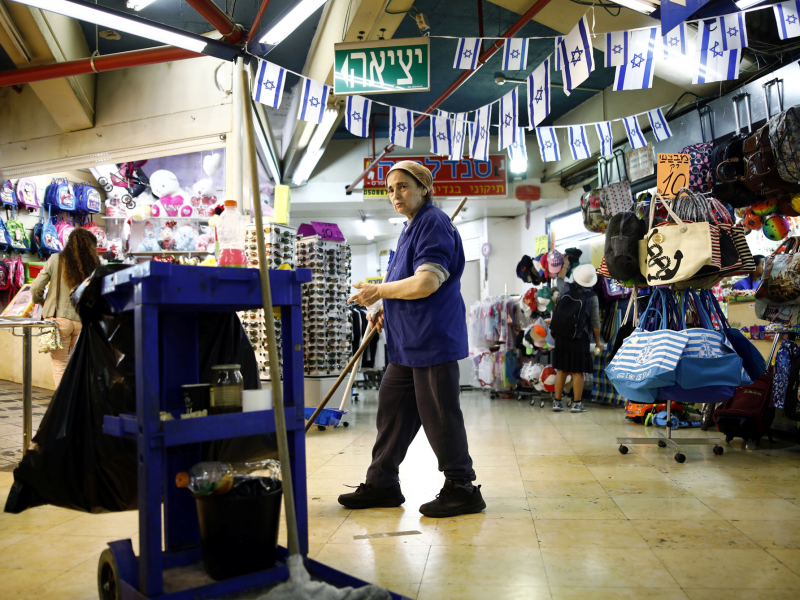
Source: The Guardian
The finished product is far from the initially-planned design. The station was originally supposed to have two floors — one for transit gates and one for commerce, according to Atlas Obscura. The idea for a third floor sprung up because two leading bus companies each wanted their own floor of gates.

Source: Atlas Obscura
Construction paused when funding for the station ran out in the 1970s. Desperate for new investors, the building plan had to expand to include more retail space.
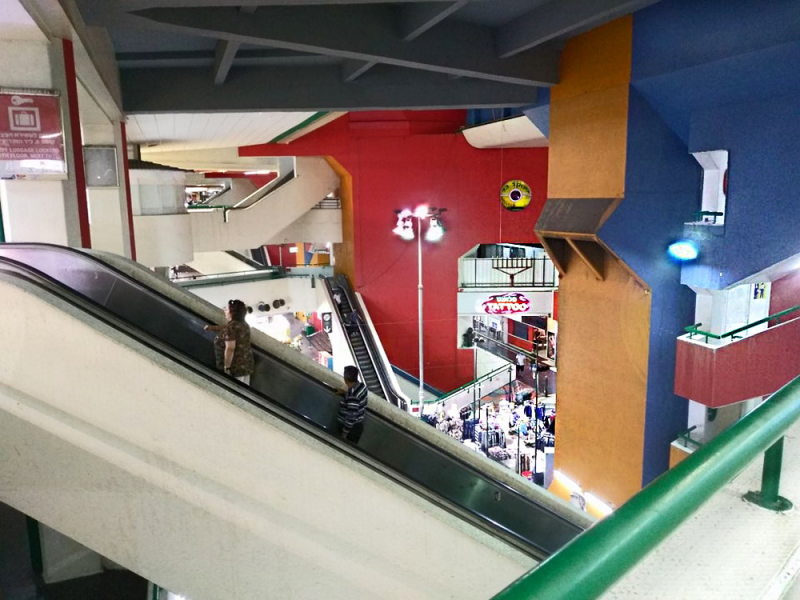
Source: Atlas Obscura
This cycle of adding more retail space to get funding continued until 1993, when the station was complete with six floors, more than 1000 shops, and a movie theater.
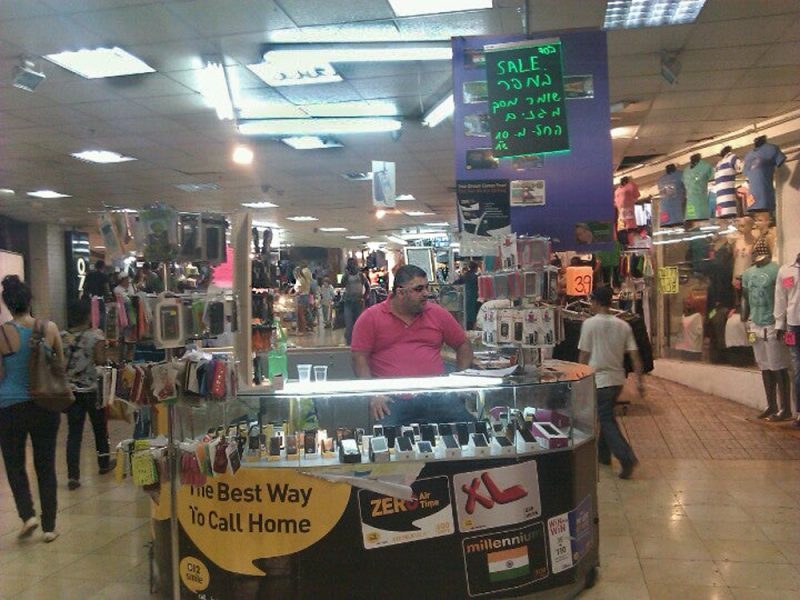
Source: Atlas Obscura
Although the bus station was supposed to be located in the center of Tel Aviv's business district, by 1993, the business center of Tel Aviv had shifted north due to the neglect of the southern neighborhood.
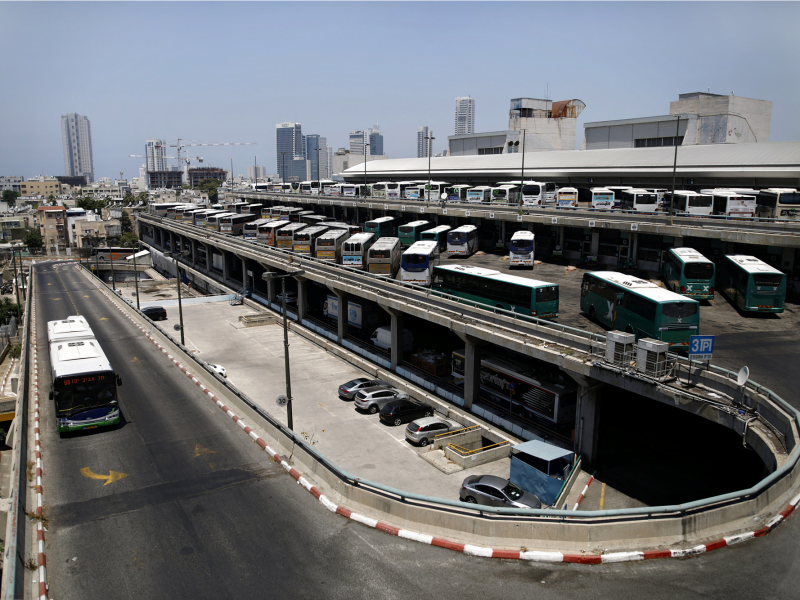
Source: The Guardian
This caused a lot of businesses in the building to close shortly after the station opened.
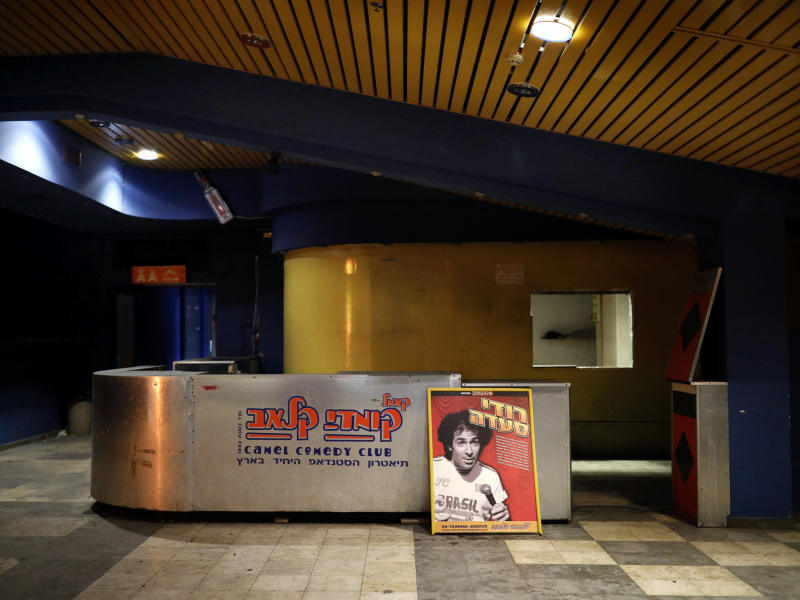
Source: Atlas Obscura
The lower levels of the station became heavily polluted, so a seventh floor was added in 1998 — terminals on the first and second floors of the station were transferred to the seventh floor. The seventh floor blocks natural light from getting to the lower floors, so more businesses on the first two floors closed.

Source: Atlas Obscura, Triposo
The neighborhood — aptly named for its central street Nave Sha'anan — stretches from the old bus station to the new one, according to Haaretz. Haaretz reported that most of the people in the neighborhood are African asylum seekers and Southeast Asian migrant workers.
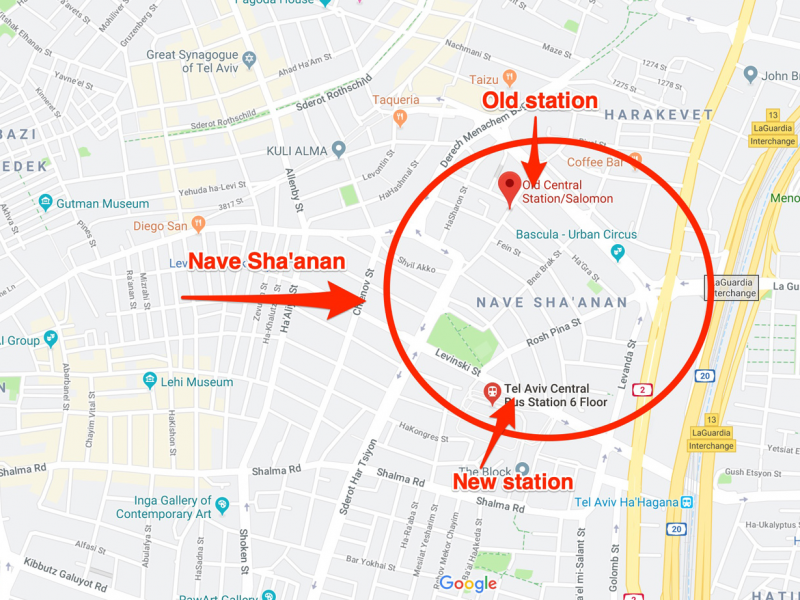
Source: Haaretz, Jewish Telegraphic Agency
Nave Sha'anan tour guide, David Cohen, told the Jewish Telegraphic Agency that the neighborhood has had a "disadvantaged population" for a long time. "By the '60s this was one of the most severe neighborhoods in Tel Aviv," he said.
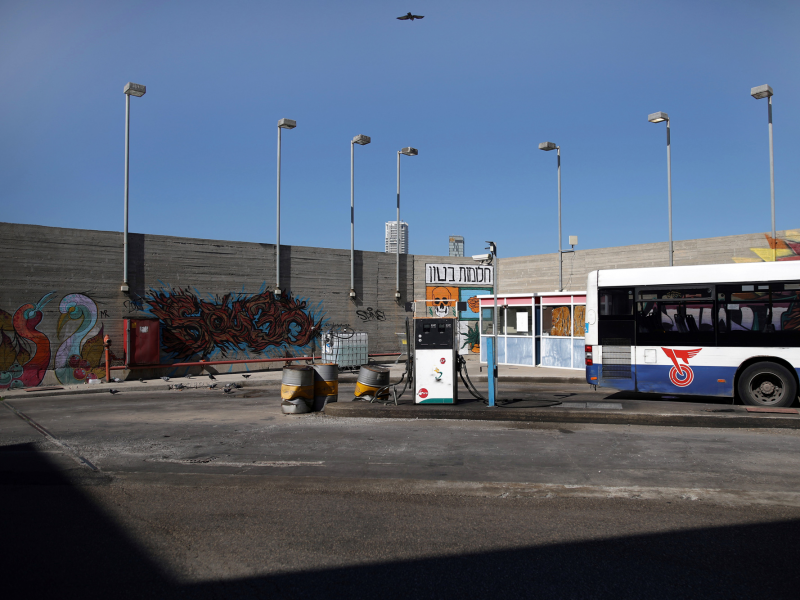
Source: Jewish Telegraphic Agency
Although the station has acquired a bad reputation, not everyone agrees with it, including Zeveloff, who commutes through the station regularly. "The bus station is so much more colorful, dynamic, and fascinating than its reputation among many Israelis would have it," she told Business Insider.

City officials have talked about tearing down the bus station for years, according to The Guardian. They reportedly wanted to build smaller bus hubs around the city instead.
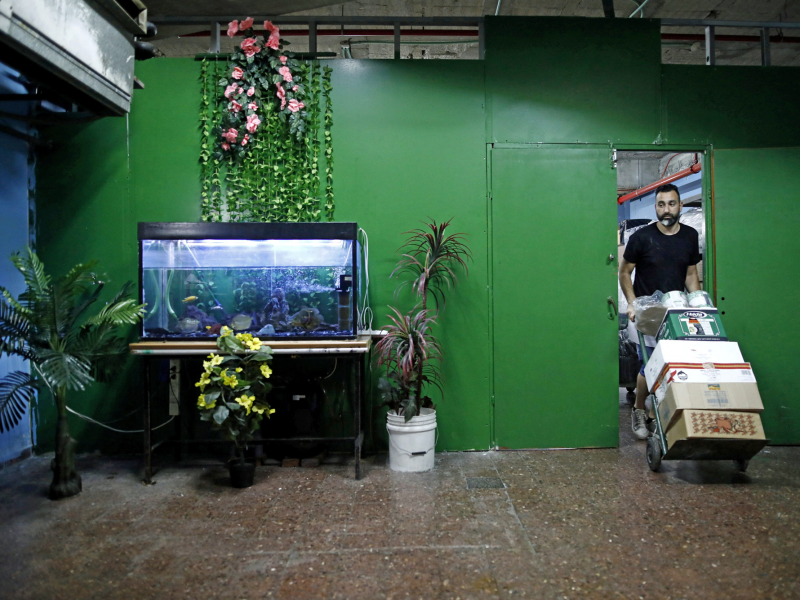
Source: The Guardian
However, there is so much cement in the structure that tearing it down would prove unsafe and uneconomical at this point.
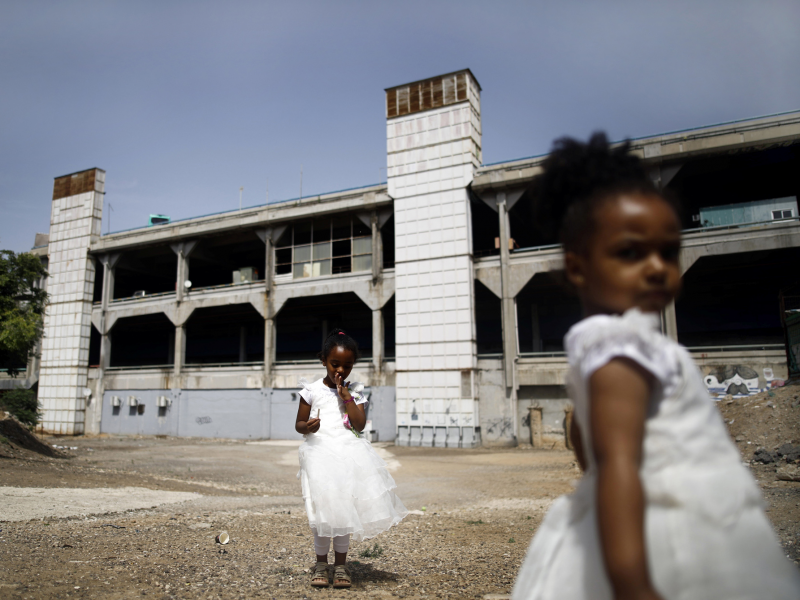
Source: The Guardian
According to the Jerusalem Post, tearing down the building would have to include getting permission from some 800 store owners, as well as from the environmental authorities.
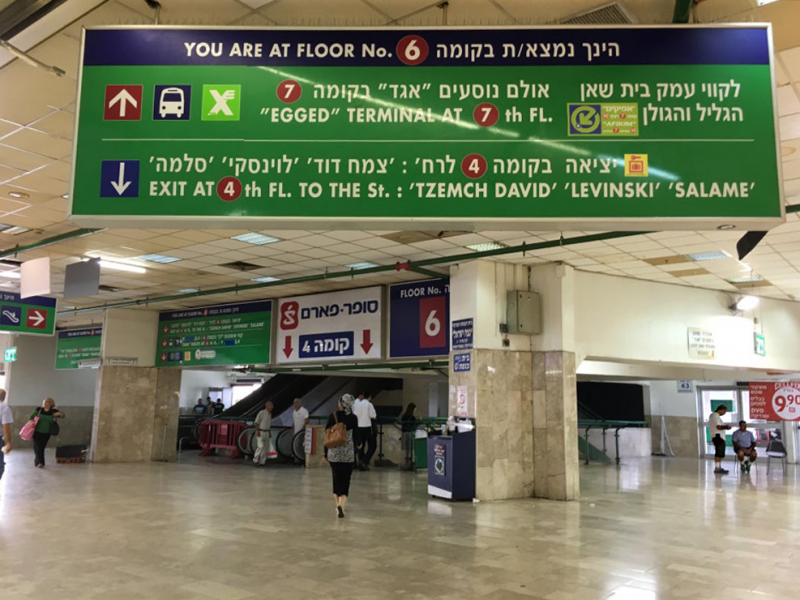
Source: The Jerusalem Post
Aside from this, local architects warned the Times of Israel that tearing down the concrete of the building would be virtually impossible, and it would leave a thick coating of dust that could choke all of Tel Aviv for weeks. Tour guides say the building will remain in Tel Aviv for at least another ten years.
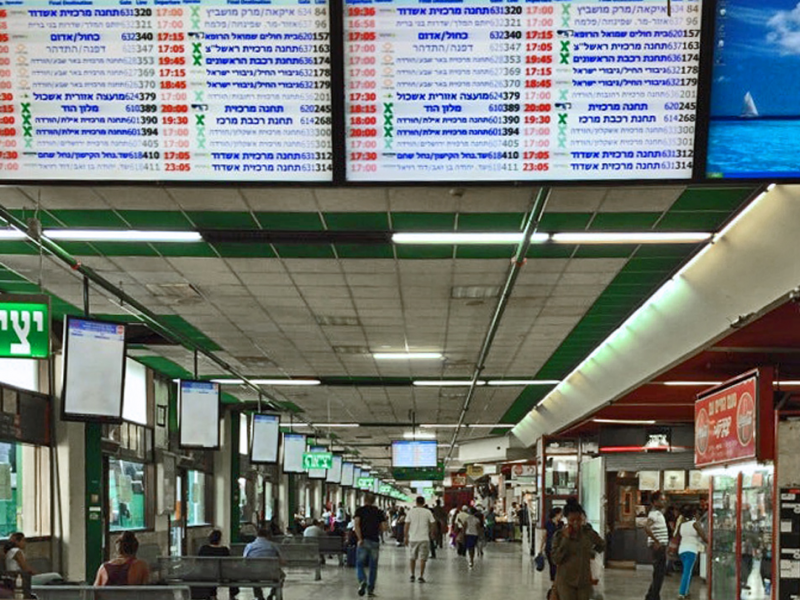
Source: The Times of Israel
